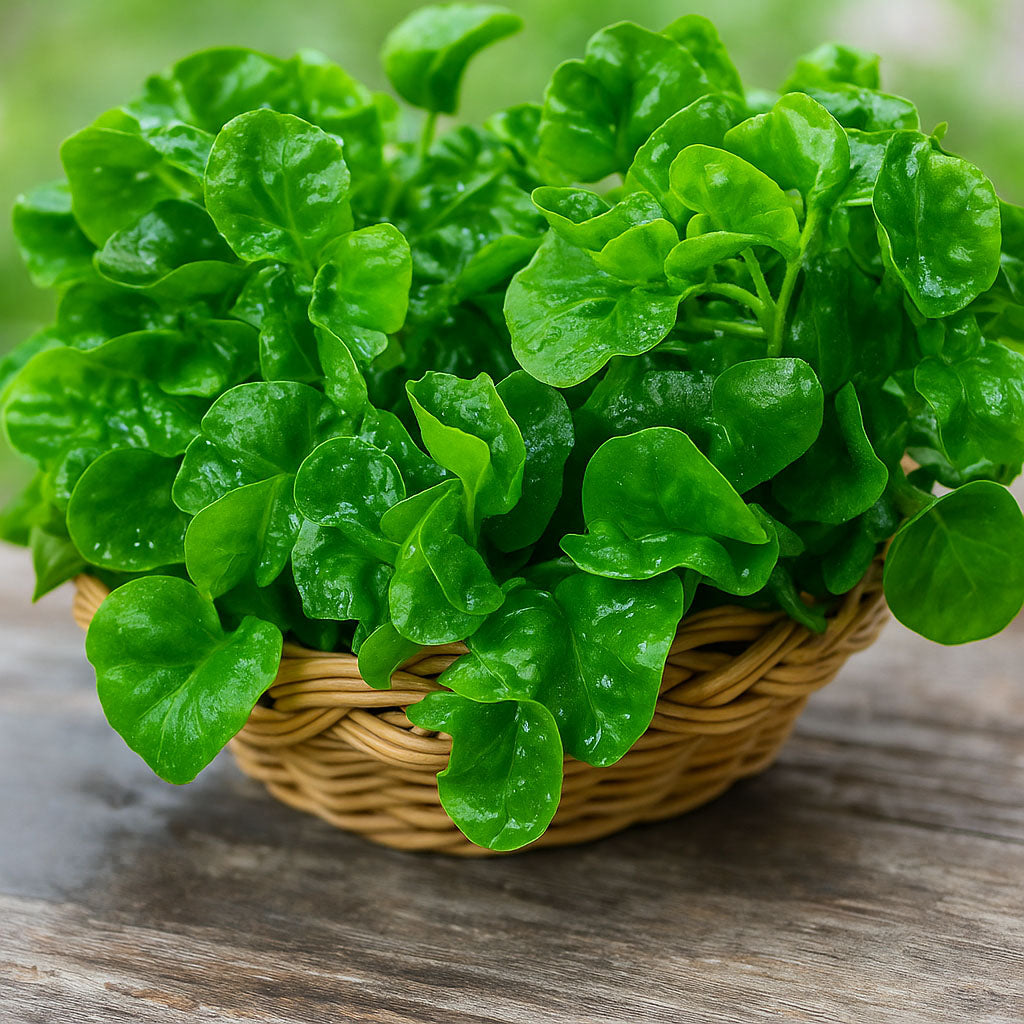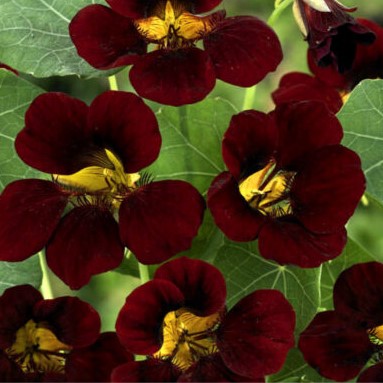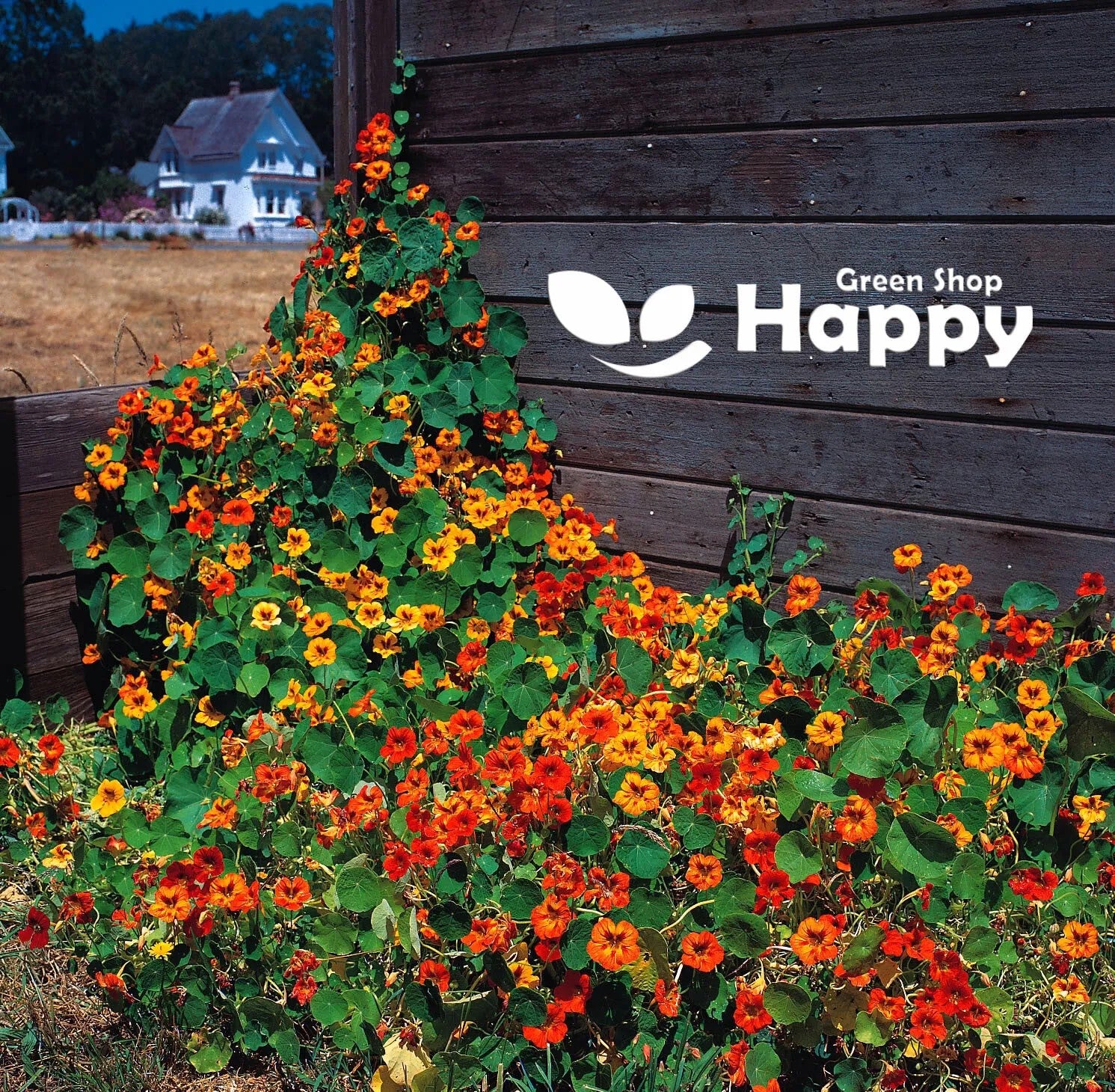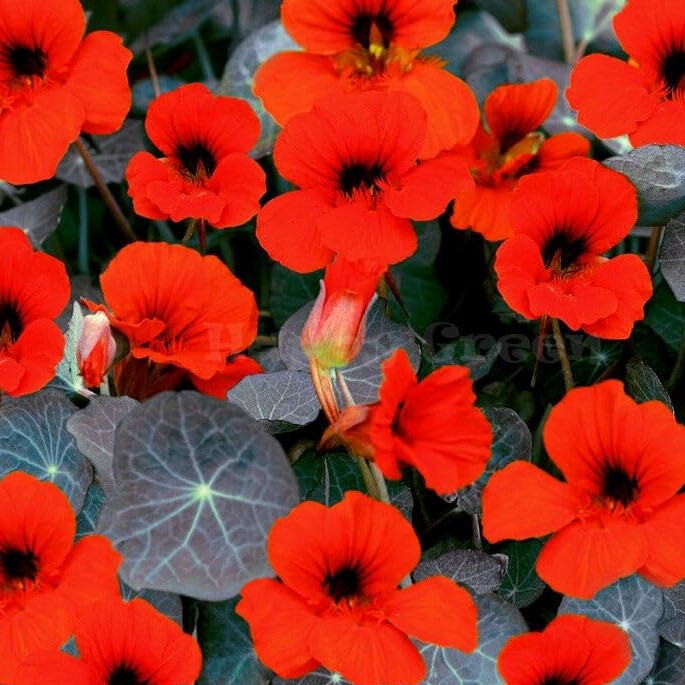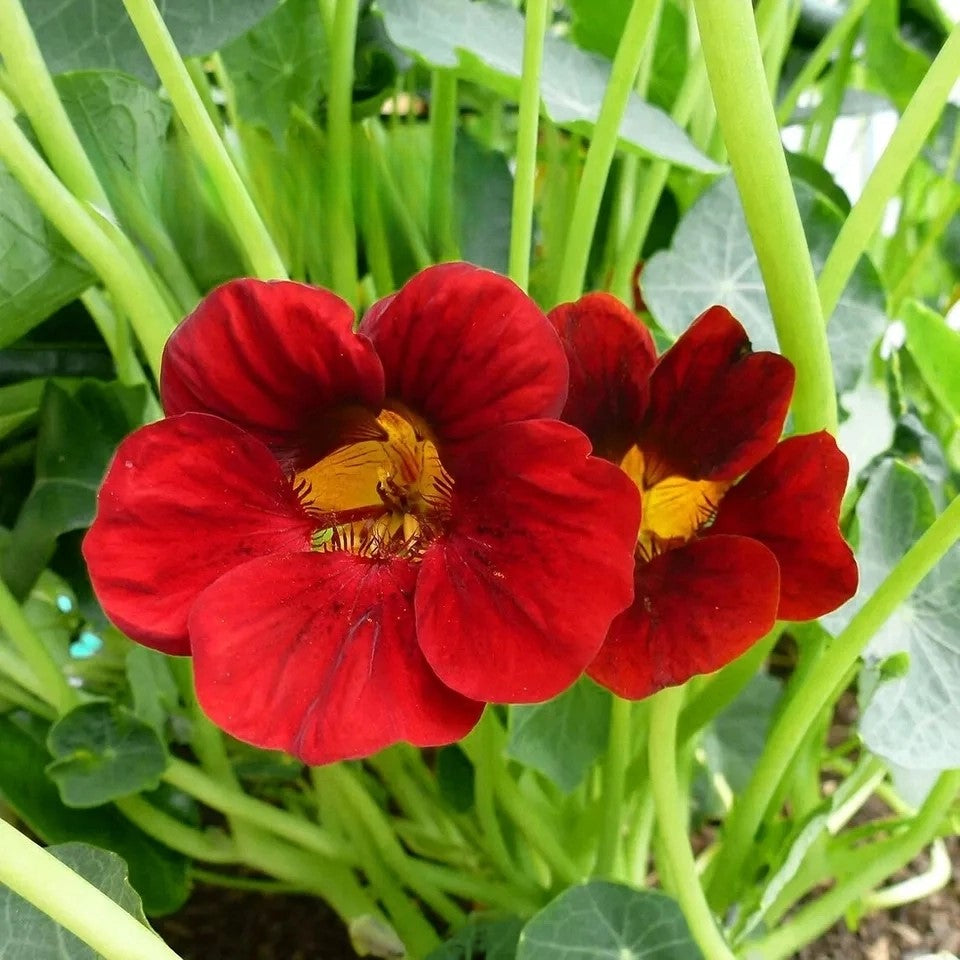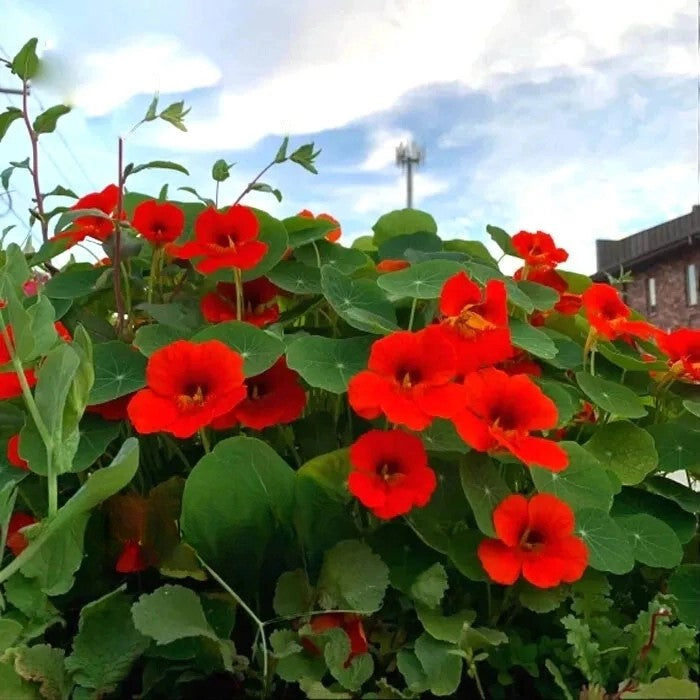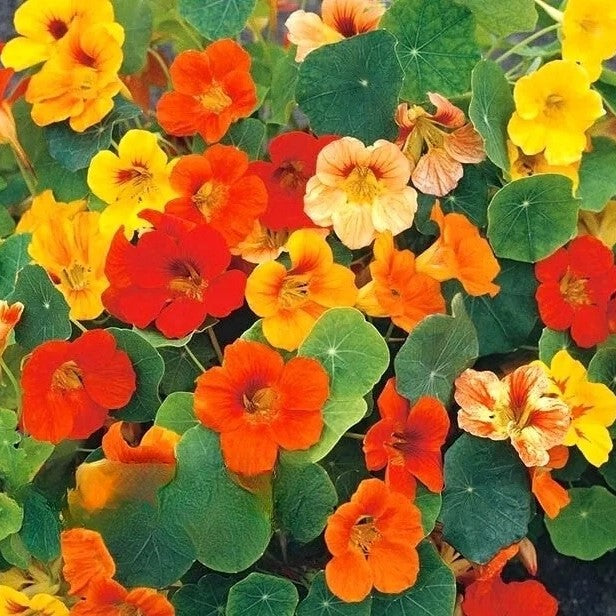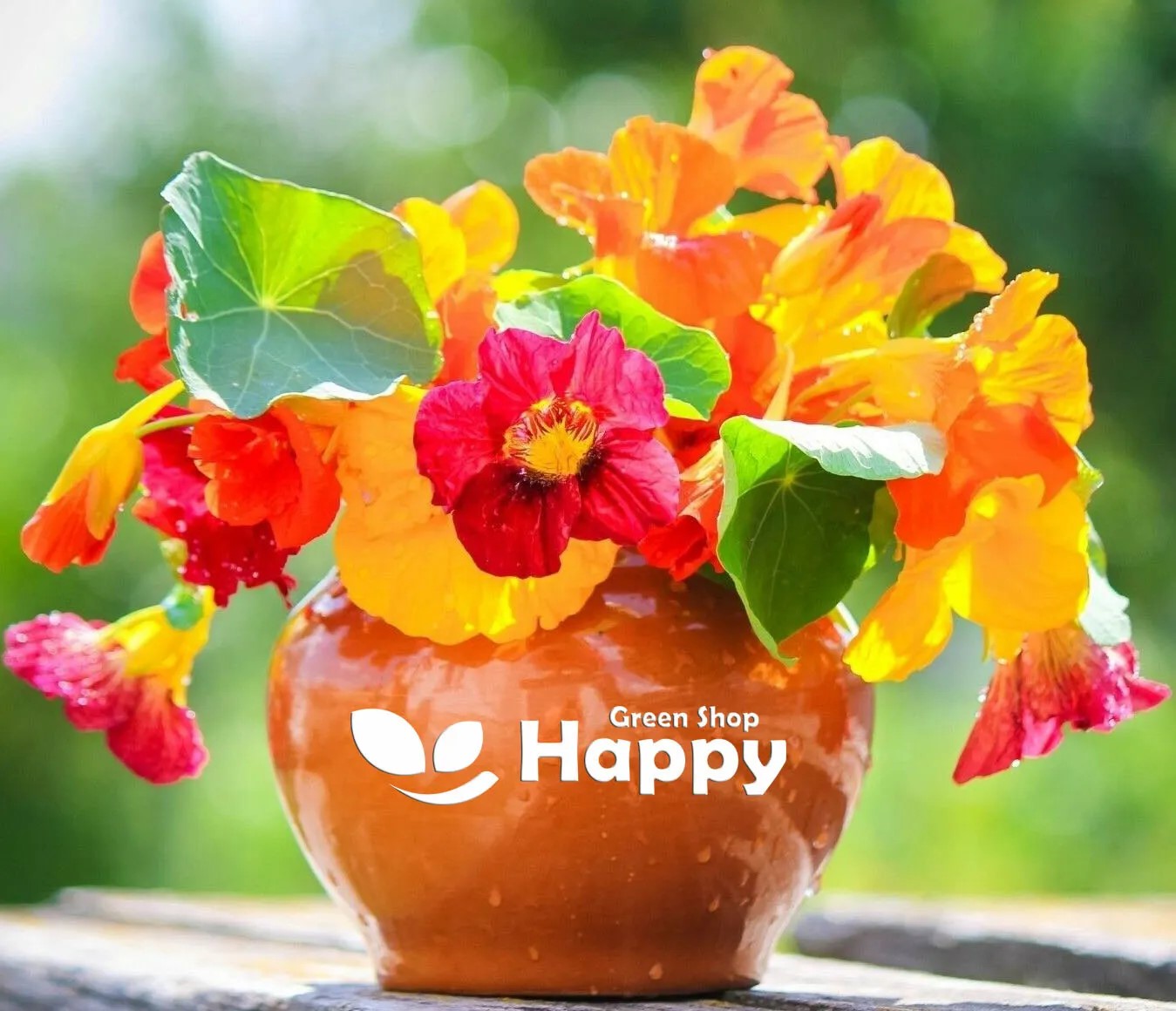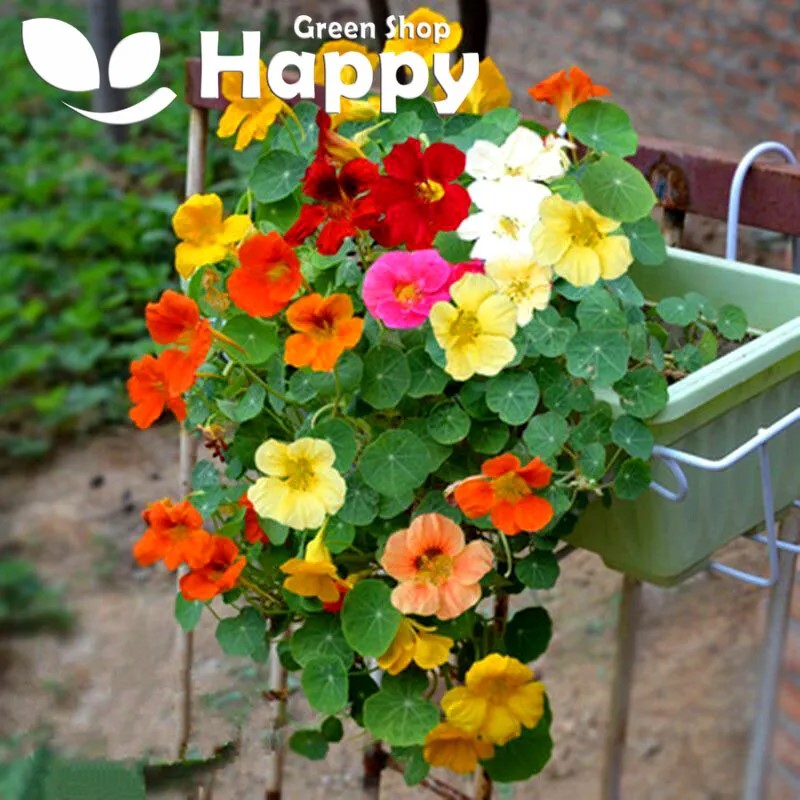Sort by:
9 products
9 products
Watercress – Seeds (Nasturtium officinale)
Watercress is a fast-growing, nutrient-packed leafy green with a peppery, fresh flavor. Perfect for salads, sandwiches, soups, and garnishes, it thrives in moist soil or near water and adds a vibrant, tangy taste to your dishes. Easy to grow, it’s an ideal addition to kitchen gardens, herb beds, or containers.
How to Grow
-
Sow seeds in shallow trays or directly in moist soil from March to July.
-
Keep seeds lightly covered and consistently damp.
-
Prefers partial shade and consistently moist or wet conditions.
-
Transplant or thin seedlings to allow 10–15 cm spacing.
-
Harvest leaves when young for the best flavor.
Key Features
-
Fast-growing, nutrient-rich leafy green
-
Fresh, peppery flavor perfect for salads and garnishes
-
Thrives in moist soil or water-adjacent beds
-
Ideal for continuous cut-and-come-again harvesting
-
Easy to grow in containers, garden beds, or water troughs
Ideal For
-
Fresh salads, sandwiches, soups, and garnishes
-
Kitchen gardens, herb beds, and small spaces
-
Health-conscious and culinary gardeners
Sowing & Harvest
-
Sow: March to July
-
Depth: Lightly covered
-
Spacing: 10–15 cm
-
Harvest: April to October
Quick Tip
-
Keep soil or growing medium consistently wet to maintain crisp, flavorful leaves.
Nasturtium Tom Thumb ‘Black Velvet’ – Seeds (Tropaeolum majus nanum)
Bring dramatic elegance to your garden with Nasturtium Tom Thumb ‘Black Velvet’, a striking dwarf variety featuring deep maroon-black velvety flowers contrasted by fresh green foliage. Compact and bushy, this nasturtium is excellent for containers, borders, and small gardens. Both the flowers and leaves are edible, adding ornamental and culinary value to your planting.
Highlights
-
Rare deep maroon-black blooms with velvety texture
-
Compact dwarf growth, ideal for pots and edging
-
Easy to grow and low-maintenance
-
Edible flowers and foliage
Key Features
-
Botanical Name: Tropaeolum majus nanum
-
Height: 20–30 cm (dwarf)
-
Position: Full sun to partial shade
-
Flowering: Summer to early autumn
Perfect For
-
Containers and pots
-
Borders and edging
-
Edible and ornamental gardens
-
Pollinator-friendly planting
Sowing Instructions
-
Sow directly outdoors after the last frost or indoors 4–6 weeks before planting out
-
Plant seeds 1–2 cm deep in well-drained soil
-
Space plants 20 cm apart
-
Germination: 10–14 days at 15–20°C
-
Flowers appear 8–10 weeks after sowing
Dwarf Nasturtium 'Peach Melba' – Seeds
(Tropaeolum nanum)
Dwarf Nasturtium 'Peach Melba' is a compact, low-growing annual that produces vibrant peach-colored blooms with subtle apricot tones. Its trailing habit makes it perfect for borders, containers, and hanging baskets. Easy to grow and fast-flowering, this variety also attracts pollinators like bees and butterflies, adding colour and life to your garden.
Key Features
-
Type: Half-hardy annual
-
Height: 15–25 cm
-
Spread: 25–35 cm
-
Flowering: June–September
-
Position: Full sun
-
Soil: Well-drained, moderately fertile
Ideal For
-
Containers and hanging baskets
-
Borders and edging
-
Pollinator-friendly gardens
-
Cottage-style planting
Sowing & Growing
-
Sow indoors: March–April at 18–22°C
-
Sow outdoors: May, after frost risk has passed
-
Germination: 7–14 days
-
Thin or transplant to 20–25 cm spacing
-
Deadhead to encourage continuous flowering
Nasturtium 'Double Gleam Hybrids' Mix – 80 Seeds (Tropaeolum majus)
Fill your garden with vibrant color using Nasturtium 'Double Gleam Hybrids' Mix. This stunning variety produces semi-double blooms in shades of yellow, orange, and red above trailing, rounded foliage. Perfect for borders, hanging baskets, and containers, nasturtiums are also edible, adding color and spice to salads.
Why Grow 'Double Gleam Hybrids'
-
Semi-double, glowing flowers in warm tones
-
Long-lasting summer blooms
-
Attracts pollinators and beneficial insects
-
Edible flowers and leaves
Key Features
-
Type: Hardy annual (Tropaeolum majus)
-
Height: 30–40 cm, trailing
-
Flowering: June–September
-
Position: Full sun or partial shade
-
Uses: Borders, baskets, containers, edible flowers
Ideal For
-
Hanging baskets and window boxes
-
Bright summer bedding
-
Edible gardens and kitchen plots
-
Companion planting to deter pests
Sowing & Growing
-
Sow indoors: March–April in pots
-
Sow outdoors: April–June directly in soil
-
Germination: 7–14 days at 15–20°C
-
Plant spacing: 25–30 cm
-
Prefers poor to moderately fertile soil for best flowering
Nasturtium ‘Empress of India’ – Seeds (Tropaeolum nanum)
Nasturtium ‘Empress of India’ (Tropaeolum nanum) is a vibrant annual with striking deep red and dark foliage. Its trailing habit makes it perfect for containers, hanging baskets, and garden borders. Edible flowers and leaves add a peppery flavor to salads and garnishes, while the plant attracts pollinators, creating both beauty and utility in your garden.
Why Grow "Empress of India"
-
Deep red blooms with dark, attractive foliage
-
Trailing habit ideal for containers and hanging baskets
-
Edible flowers and leaves with a peppery taste
-
Attracts bees, butterflies, and other pollinators
Key Features
-
Type: Annual (Tropaeolum nanum)
-
Height: 20–30 cm
-
Flowering: June–September
-
Position: Full sun to partial shade
-
Uses: Containers, hanging baskets, borders, edible garden
Ideal For
-
Edible and ornamental garden planting
-
Hanging baskets and container displays
-
Pollinator-friendly gardens
-
Borders and small garden beds
Sowing & Growing
-
Sow indoors: March–April in trays or pots
-
Sow outdoors: After last frost in prepared soil
-
Germination: 7–14 days at 18–22°C
-
Thin seedlings to 20–25 cm apart
-
Prefers well-drained soil and sunny positions
-
Deadhead to encourage continuous flowering
Nasturtium ‘Fiery Festival’ Double Red Seeds (Tropaeolum majus)
Nasturtium ‘Fiery Festival’ is a vibrant annual producing fully double, fiery red blooms with a trailing or bushy habit. Blooming from late spring to autumn, it’s perfect for hanging baskets, containers, and garden borders. Hardy, easy to grow, and edible, its colorful flowers also attract pollinators and add a dramatic splash of color to any garden.
What Makes It Special
-
Fully double, fiery red blooms
-
Edible flowers and attractive to pollinators
-
Hardy, low-maintenance, and long-flowering
Key Features
-
Botanical name: Tropaeolum majus
-
Annual
-
Height: 20–40 cm (bushy) or trailing 50–70 cm
-
Bloom time: Late spring to autumn
Ideal For
-
Hanging baskets, containers, and borders
-
Pollinator-friendly gardens
-
Edible flowers for salads and garnishes
Sowing
-
Sow indoors Feb–Apr or outdoors Apr–Jun
-
Cover seeds lightly with soil
-
Germination: 7–14 days at 18–22°C
-
Space seedlings 25–30 cm apart
-
Flowers the same year
Nasturtium 'Honolulu' Seeds (Tropaeolum nanum)
Nasturtium 'Honolulu' is a charming dwarf annual with bright, cheerful flowers in shades of red, orange, and yellow. Its compact growth habit makes it ideal for containers, window boxes, and small garden beds. Easy to grow and low-maintenance, it adds a splash of vibrant color while attracting pollinators.
What Makes It Special
-
Bright, cheerful blooms in red, orange, and yellow
-
Compact, dwarf growth ideal for small spaces and containers
-
Easy to grow and low-maintenance
-
Attracts pollinators like bees and butterflies
Key Features
-
Botanical name: Tropaeolum nanum
-
Variety: 'Honolulu'
-
Seed count: Approx. seeds per pack
-
Height/Spread: 15–25 cm tall, 20–30 cm spread
-
Position: Full sun; well-drained soil
-
Flowering period: June–September
Ideal For
-
Containers, window boxes, and small garden beds
-
Borders and edging
-
Pollinator-friendly gardens
-
Brightening patios and terraces
Sowing Instructions
-
When to sow: March–May indoors or outdoors
-
How to sow:
-
Sow seeds 1–2 cm deep in seed trays or directly in pots
-
Germination occurs in 7–14 days at 18–22°C
-
-
Transplanting: Plant seedlings outdoors after frost, spacing 15–20 cm apart
-
Care: Water moderately; remove faded flowers to encourage continuous blooming
Nasturtium ‘Out Of Africa’ – 60 Seeds (Tropaeolum majus)
Add a unique touch to your garden with Nasturtium ‘Out Of Africa’, a rare variety admired for its strikingly variegated foliage and vibrant flowers. The creamy-white marbled leaves provide a beautiful backdrop for the classic nasturtium blooms in shades of orange, red, and yellow. A vigorous yet easy-to-grow plant, perfect for borders, beds, hanging baskets, or edible gardens.
Highlights
-
Distinctive cream-variegated leaves with colorful flowers
-
Long-lasting blooms throughout summer and autumn
-
Edible flowers and foliage – peppery flavor for salads and garnishes
-
Hardy and low-maintenance
Key Features
-
Botanical Name: Tropaeolum majus
-
Seed Count: 60
-
Height: 30–40 cm
-
Position: Full sun to partial shade
-
Flowering Period: Summer to first frost
Perfect For
-
Adding foliage contrast to beds and borders
-
Hanging baskets and containers
-
Edible gardens and pollinator-friendly planting
-
Cottage and ornamental gardens
Sowing Instructions
-
Sow indoors 4–6 weeks before last frost or directly outdoors after frost risk has passed
-
Plant seeds 1.5–2 cm deep in well-drained soil
-
Space plants 25–30 cm apart
-
Germination: 10–14 days at 15–20°C
-
Flowers in 8–10 weeks after sowing
Nasturtium Dwarf ‘Whirleybird’ Double – Seeds (Tropaeolum nanum)
Add a burst of color and playful texture to your garden with Dwarf Nasturtium ‘Whirleybird’ Double. This charming variety produces double-layered, vibrant flowers in shades of orange, red, and yellow, creating a striking display. Compact and bushy, it’s ideal for borders, containers, or small garden spaces. Both the flowers and leaves are edible, perfect for salads and garnishes.
Highlights
-
Compact dwarf growth, perfect for small spaces
-
Double blooms in bright, cheerful colors
-
Edible flowers and leaves
-
Thrives in sunny, well-draining locations
Key Features
-
Botanical Name: Tropaeolum nanum
-
Height: 20–30 cm (dwarf variety)
-
Sun: Full sun to partial shade
-
Flowering: Summer to early autumn
Ideal For
-
Small garden beds, containers, and borders
-
Edible flower gardens
-
Pollinator-friendly gardens
-
Decorative accents in compact spaces
Sowing Instructions
-
Sow indoors or directly outdoors after the last frost
-
Plant 1–2 cm deep in well-draining soil
-
Space 15–20 cm apart
-
Germination: 7–14 days at 18–20°C
-
Flowers: 8–10 weeks after sowing

